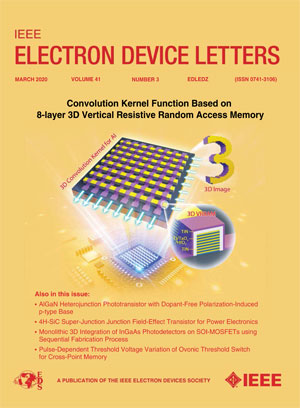Novel Wafer-Level Ta-Ta Direct Thermocompression Bonding for 3D Integration of Superconducting Interconnects for Scalable Quantum Computing System
IF 4.1
2区 工程技术
Q2 ENGINEERING, ELECTRICAL & ELECTRONIC
引用次数: 0
Abstract
As quantum computing evolves from small-scale qubit systems to more complex large-scale processors, the demand for individual qubit control and scalability will lead to the use of 3D integration and packaging technologies. Although advances in 3D integration in traditional CMOS technology are notable at room temperature, its potential in cryogenic environments, especially in quantum computing, remains largely unexplored. Superconducting qubit technology demands improvements in qubit relaxation and coherence time. Tantalum (Ta), renowned for its minimal loss, remarkable coherence time and superior stability, emerges as a promising candidate for superconducting materials. This study presents a novel approach by utilizing Ta-Ta thermo-compression bonding to create superconducting joints between wafers for vertical integration for the first time. A successful bonding temperature (500 °C) and pressure (0.3 MPa) results in the emergence of用于可扩展量子计算系统超导互连器件三维集成的新型晶圆级 Ta-Ta 直接热压焊接技术
随着量子计算从小规模量子比特系统发展到更复杂的大规模处理器,对单个量子比特控制和可扩展性的需求将导致三维集成和封装技术的使用。尽管传统 CMOS 技术的三维集成在室温下取得了显著进展,但其在低温环境下的潜力,尤其是在量子计算方面的潜力,在很大程度上仍未得到开发。超导量子位技术要求改进量子位的弛豫和相干时间。钽(Ta)以其最小的损耗、显著的相干时间和超强的稳定性而闻名,成为超导材料的理想候选材料。本研究提出了一种新颖的方法,即利用钽-钽热压键合技术首次在用于垂直集成的晶片之间创建超导接合点。成功的键合温度(500 °C)和压力(0.3 兆帕)导致了 $\alpha $ -tantalum 的出现,正如早先报道的那样,这显著改善了相干时间。剪切强度测试显示结合强度为 200 兆帕,这清楚地表明两层之间的结合良好。因此,我们证明了利用这种方法实现超导芯片三维集成的可行性,从而为创造性的量子计算架构打开了大门。
本文章由计算机程序翻译,如有差异,请以英文原文为准。
求助全文
约1分钟内获得全文
求助全文
来源期刊

IEEE Electron Device Letters
工程技术-工程:电子与电气
CiteScore
8.20
自引率
10.20%
发文量
551
审稿时长
1.4 months
期刊介绍:
IEEE Electron Device Letters publishes original and significant contributions relating to the theory, modeling, design, performance and reliability of electron and ion integrated circuit devices and interconnects, involving insulators, metals, organic materials, micro-plasmas, semiconductors, quantum-effect structures, vacuum devices, and emerging materials with applications in bioelectronics, biomedical electronics, computation, communications, displays, microelectromechanics, imaging, micro-actuators, nanoelectronics, optoelectronics, photovoltaics, power ICs and micro-sensors.
 求助内容:
求助内容: 应助结果提醒方式:
应助结果提醒方式:


